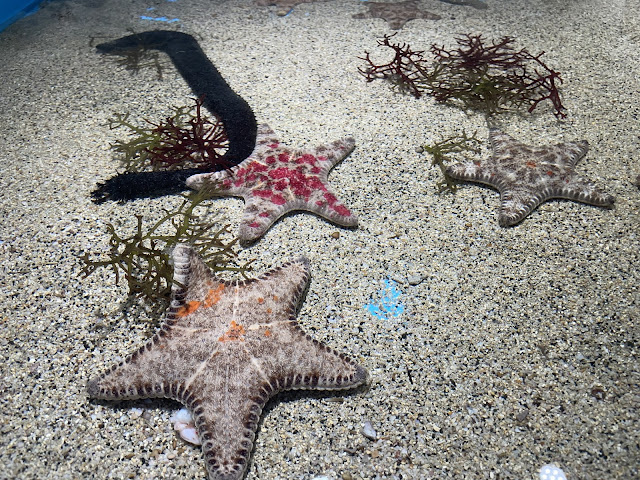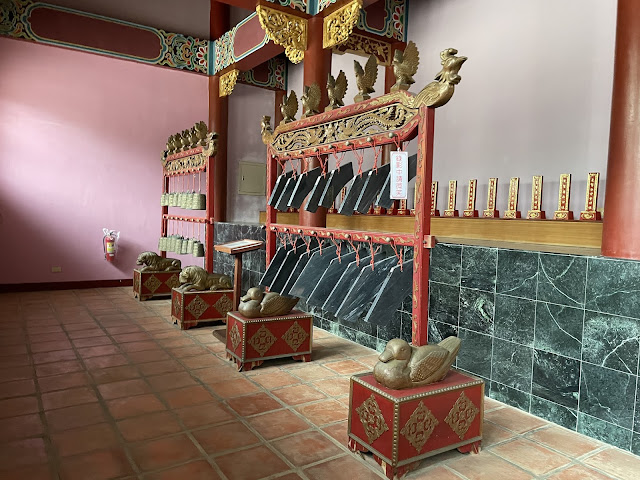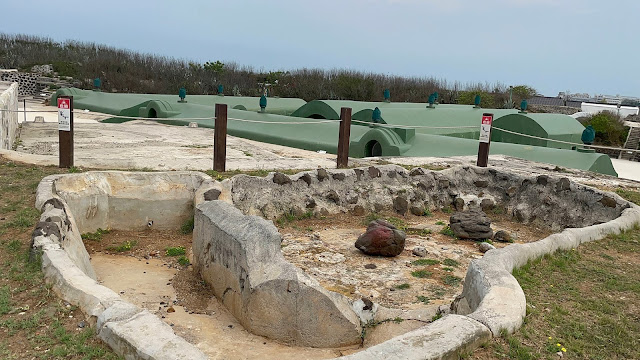Travel Date: 27/03/2021 - 01/04/2021
It's our first time visiting Penghu, and I'll describe the process, prices, our accommodation, and the places we visited in separate posts as I have a lot planned.
We started by visiting the historical Ash Kilns and the famous attraction known as "Moses Parted the Sea," where we witnessed the low tide creating a pathway to a nearby small island. We also explored Nanliao Village, renowned for its traditional fishing settlement, with many interesting buildings to see.
In addition to the main island, we ventured to the smaller islands connected by sea-crossing bridge. On Yuwengdao Island in Xiyu Township, the furthest island, we visited the Yuwengdao Lighthouse, the Sanxian Pagodas with their breathtaking views of the sea, and observed the fake cannon. We also enjoyed the natural beauty of Daguoye Columnar Basalt, Niuxin Mountain and Paradise Road. In Xiyu, there are several forts worth exploring, such as the Western Fort, Eastern Fort, and the Five-hole bunker.
Zhuwan Temple left me with mixed feelings as I enjoyed seeing the turtles but felt sorry for them living in captivity underground.
Chen Erkan Historical House, along with the entire village of unique old buildings, is a famous place to visit in Penghu.
Going south on Magong Island, we explored the remains of a Dutch castle (actually a memorial), as well as the South and North Pagodas, which have unique and intriguing designs, though their exact story remains unknown.
Magong City is also filled with historical architecture. We explored Zhongyang Old Street, old wells, Mazu Temple, and the sole remaining city gate.
We discovered a place in Penghu where you can interact with starfish and sea urchins, which was particularly interesting for kids as they could learn more about the underwater world.
Another fort we visited, Jinguitou Fort, was once used to defend the island of Penghu.
For those interested in temples and religions, the Confucius Temple is worth a visit.
In just four days, we experienced an incredible amount. Penghu is truly beautiful, and I hope to revisit someday in the future.
Our four-day trip in Penghu has come to an end. We have visited almost everything on my travel list in the main islands. With the boat departure scheduled for 4:30 PM, we had a few hours left to explore. We mainly grabbed some food and visited Jinguitou Fort and Confucius Temple. However, there are still some places I haven't mentioned in my previous posts.
Although we didn't have much time to rest, it was a wonderful trip as I wanted to see everything. We spent the whole day driving, climbing, and visiting various places. Unfortunately, we didn't have the opportunity to enjoy the beach or go swimming...
Aquatic Seedling Breeding Farm, Agriculture and Fisheries Bureau of Penghu County Government (澎湖縣政府農漁局水產種苗繁殖場)
One interesting place we visited was the Aquatic Seedling Breeding Farm, managed by the Agriculture and Fisheries Bureau of Penghu County Government. It's a place where you can interact with starfish, sea cucumbers, and sea urchins. They also have several aquariums showcasing corals and other marine creatures. Additionally, they have large breeding tanks for fish, sea urchins, and seaweed.
Confucius Temple (Wenshi Academy) 孔廟 (文石書院)
Another noteworthy visit was the Confucius Temple, also known as Wenshi Academy. Wenshi Academy was established in 1766 but unfortunately destroyed during the Sino-French War. During the early period of Japanese occupation, the academy was repurposed as a field hospital. However, after the hospital was closed, it underwent reconstruction and emerged as the Penghu Confucian Temple.
In 1963, following renovations, the original buildings of Wenshi Academy underwent significant changes, except for the Kuixing Building, which retained its original appearance. Recognizing its historical significance, the Kuixing Building was officially designated as one of the historic buildings in Penghu County on December 11, 2002.
Jinguitou Fort (金龜頭砲臺)
Jinguitou Fort is one of the twelve forts that protected the Penghu Hall City during the Qing Dynasty. The exact date of its original construction is unknown, but it was likely around 1718. However, the current fort we see today was built in 1887. In 2001, it was designated as a national monument.
During the Japanese occupation, the fort underwent reconstruction from 1902 to 1904 and was renamed Tiannan Rongtai. After World War II, it served as the headquarters of the Tiannan Camp, which was the Communication Battalion of the Penghu Defense Command in the Taiwan Army. Eventually, the military released the fort, handing it over to the Penghu County Government.
On September 25, 2013, the Cultural Bureau of the Penghu County Government installed a US-made M1 40mm anti-aircraft gun on the fort. This particular anti-aircraft gun was originally located here during the early days of the national army but was later removed due to changes in military equipment. In order to preserve its historical significance, the Cultural Bureau requested the Ministry of National Defense's approval and safely transported the gun from the Army Ordnance Industry Development Center in Nantou Jiji to its current location at the fort.

































0 komentarze:
Post a Comment